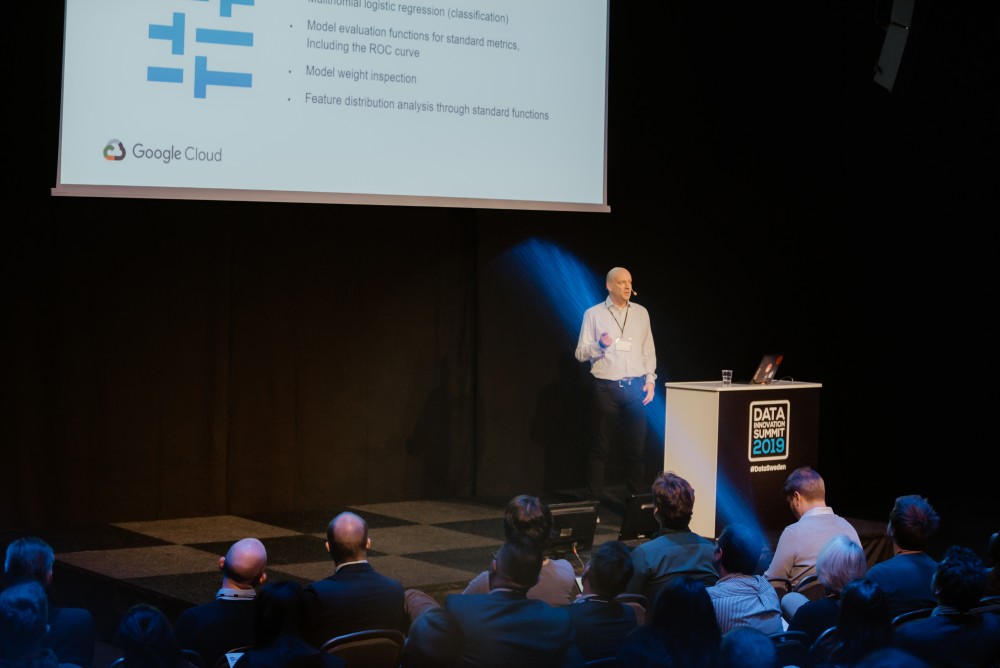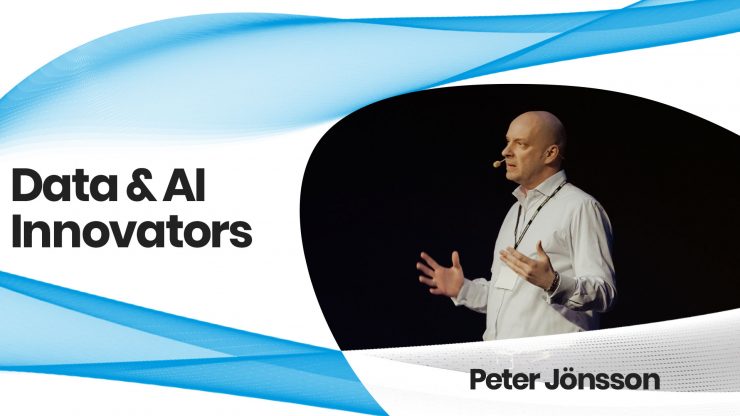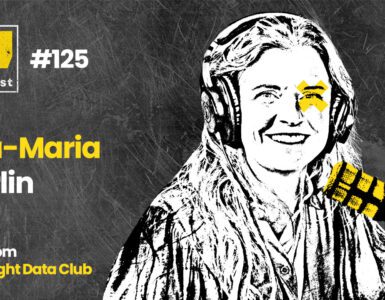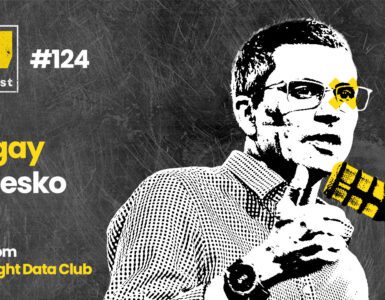Data Innovation Summit turns five next March. Along the way, we have had fantastic speakers unselfishly sharing their knowledge on stage with their peers. Without them, this journey would be impossible.
This interview is part of an interview series dedicated to humanising Data and AI innovation and celebrating speakers who have presented on Data Innovation Summit. The emphasis lies on the Data/AI people/practitioners, their professional journey and their stories.
The data analytics and BI trends gravitate towards providing easier, faster and smoother access to all data users in every organisation. Data insights are no longer reserved only for IT professionals. Moreover, we are increasingly seeing actionable analytics tools that allow data workers to access their data and take action, all in the same workflow. And of course, the growing need for trustworthy and explainable AI is giving rise to the practice of understanding and presenting transparent views into machine learning models.
Peter Jönsson, a Solutions Architect at Tableau Software and three-times Data Innovation Summit speaker, shares his views on the most notable breakthroughs with data analytics, as well as the current challenges decision-makers are dealing with, and his predictions for data analytics.


Hyperight: Hi Peter, we are glad to have you with us today and have the chance to catch up. You are a three-time speaker at the Data Innovation Summit. To refresh our memories and introduce yourself to our readers, please tell us a bit about yourself and the company you are coming from.
Peter Jönsson: My name is Peter Jönsson and I work as a Solutions Architect at Tableau Software in Stockholm. Tableau is a worldwide market leader in the analytics and data visualization industry and I am evangelising the benefits of a true self-service, easy-to-use, and speedy-to-deploy analytics platform. I’m getting people excited about the prospect of finding unlimited insights from their data and help them unearth answers to questions that no one ever thought they could ask.
Hyperight: As 2020 is the year in which the Data Innovation Summit turns 5, could you point out what have been the most important breakthroughs with data analytics and AI in the last 5 years according to you?
Peter Jönsson: Three main trends stand out clearly:
1) Data Democratization, without a doubt. Access to data, gaining analytical insight and ability to share and visualize information is not for few IT specialists anymore, it is actually something that every knowledge worker in every organization benefit from. More departments and roles working with data has led to an increase in data literacy, shifting the definition of data science and blurring the lines of traditional data expertise and business domain knowledge
2) The rise of explainable AI. Leaders are asking data science teams to use artificial intelligence models that are more explainable and offer documentation or an audit trail around how these models are constructed. AI has to be trusted to make the strongest business impact, and the generated conclusions must be intelligible, actionable, and easy to understand—all to help humans better understand their data. This need for transparency is driving the growth of explainable AI—the practice of understanding and presenting transparent views into machine learning models.
3) Natural Language humanizing data – BI vendors are incorporating natural language processing (NLP) into their platforms, offering a natural language interface to visualizations so people can interact with their data as they would a person, allowing everyone to ask deeper questions. The technology is evolving to support analytical conversation—defined as a human having a conversation with the system about their data, leveraging context to understand the user’s intent and further the dialogue, creating a more natural, conversational experience. This evolution will break down barriers to analytics adoption and help transform workplaces into more data-driven, self-service operations.
Access to data, gaining analytical insight and ability to share and visualize information is not for few IT specialists anymore, it is actually something that every knowledge worker in every organization benefit from.


Hyperight: Communicating the value in data is most effectively done through data visualisation. What are the data visualisation trends we can expect for 2020?
Peter Jönsson: We will see an increase of Actionable Analytics, where data is put into context. Data workers need to access their data and take action, all in the same workflow. BI platform vendors are responding by offering capabilities like mobile analytics, embedded analytics, dashboard extensions, and APIs. Embedded analytics puts data and insights where people are already working so they don’t have to navigate to another application or shared server, while dashboard extensions bring access to other systems right into the dashboard. While these capabilities bring action and insight together within platforms and tools, mobile analytics allows users to access data wherever they are physically and empowering different business teams and verticals with on-demand data in context.
Hyperight: What are the current challenges with data analytics? And how does Tableau deal with them?
Peter Jönsson: Believe it or not, it’s still access to data that is the main barrier in most organizations when asked what’s preventing them from becoming truly data-driven. More than 60% of key decision-makers in any organization still lack access to relevant data to make daily informed decisions. With greater diversity and complexity of data sources, and more of the workforce using data to drive decisions, data management is more critical than ever. Companies are turning to data curation—which includes capturing, cleaning, defining, and aligning disparate data—to bridge the gap between data and its real-world applications. Data curation tools and processes (like data catalogues and semantic governance) are now converging with BI platforms to link data with its business context and maintain governance at scale. Ultimately, governed data curation will provide a stronger foundation for the entire analytical pipeline, helping users move beyond asking questions of their data to asking questions of their business.


AI has to be trusted to make the strongest business impact, and the generated conclusions must be intelligible, actionable, and easy to understand—all to help humans better understand their data.
Hyperight: According to Gartner, by 2020, 50% of organizations will lack sufficient AI and data literacy skills to achieve business value. And as organizations become more data-driven, poor data literacy will become an inhibitor to growth. Is this dire prediction true and how can it be averted?
Peter Jönsson: Yes, it is unfortunately true. Bridging the data literacy gap is one of the most important tasks in 2020. Organizations will need to implement detailed blueprint programs, complete with up-skill programs, trainings, certification programs, to help the workforce achieve adequate levels of data and analytics understanding. Software vendors, consulting companies, analytical advisory organizations, all need to assist with usable interfaces to assist knowledge workers of all levels to reach maximum data insight, with minimum effort.


Hyperight: What are your future outlooks when it comes to data analytics, machine learning, and AI for the next couple of years?
Peter Jönsson: We have only seen the beginning of what the cloud has to offer in terms of analytics. Data is moving to the cloud faster than ever, driving organizations to rethink their data strategy.
When modernizing your data strategy, you must think about where data is stored. For many companies, this means considering moving data to the cloud because of added flexibility and scalability at a lower total cost of ownership. As data moves to the cloud at an accelerated rate, analytics will naturally follow because of “data gravity” — the idea that services and applications are pulled in the direction of where the data resides. This is causing leaders to shift from traditional to modern BI, assessing whether or not their chosen BI platform will support a move to full-cloud analytics. Not every company is ready for this move, but in 2019 we saw more companies experimenting with hybrid solutions to take advantage of diverse data sources and the benefits of the cloud. In 2020 more organizations will continue on that path, and beyond.
















Add comment